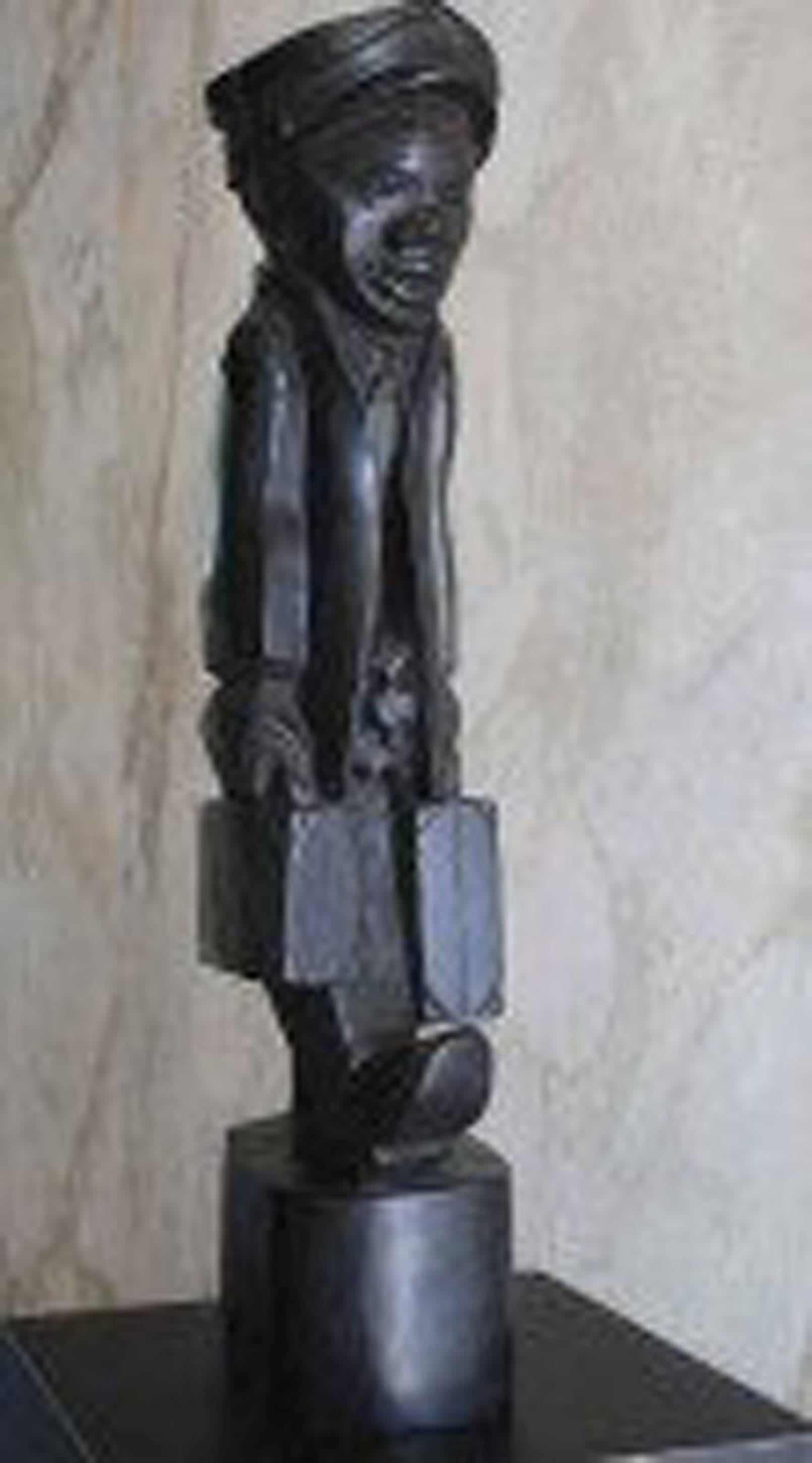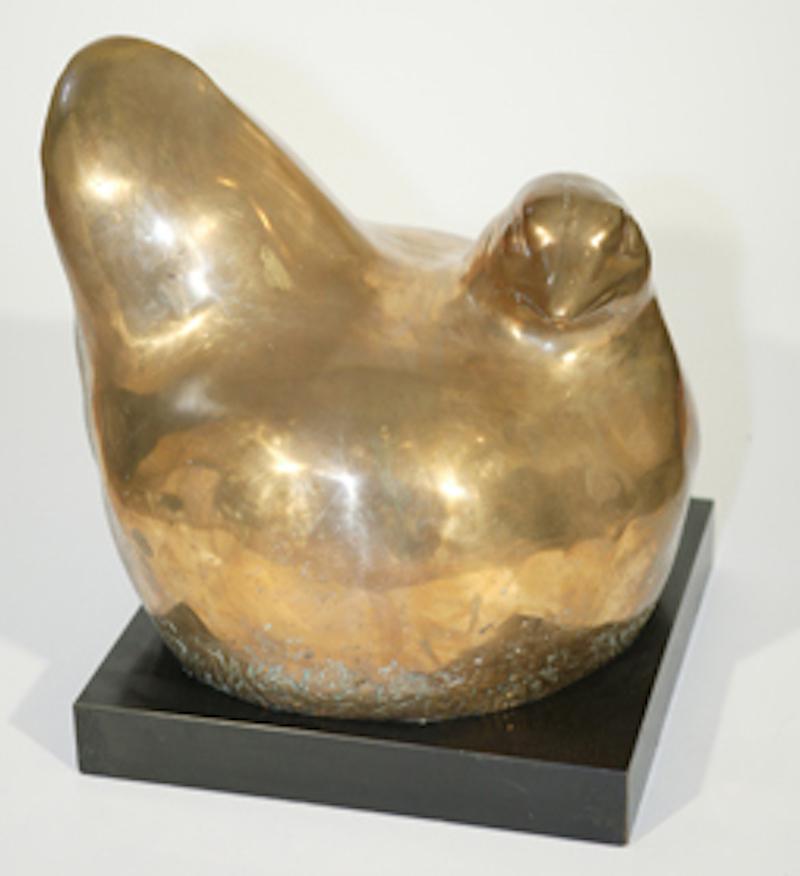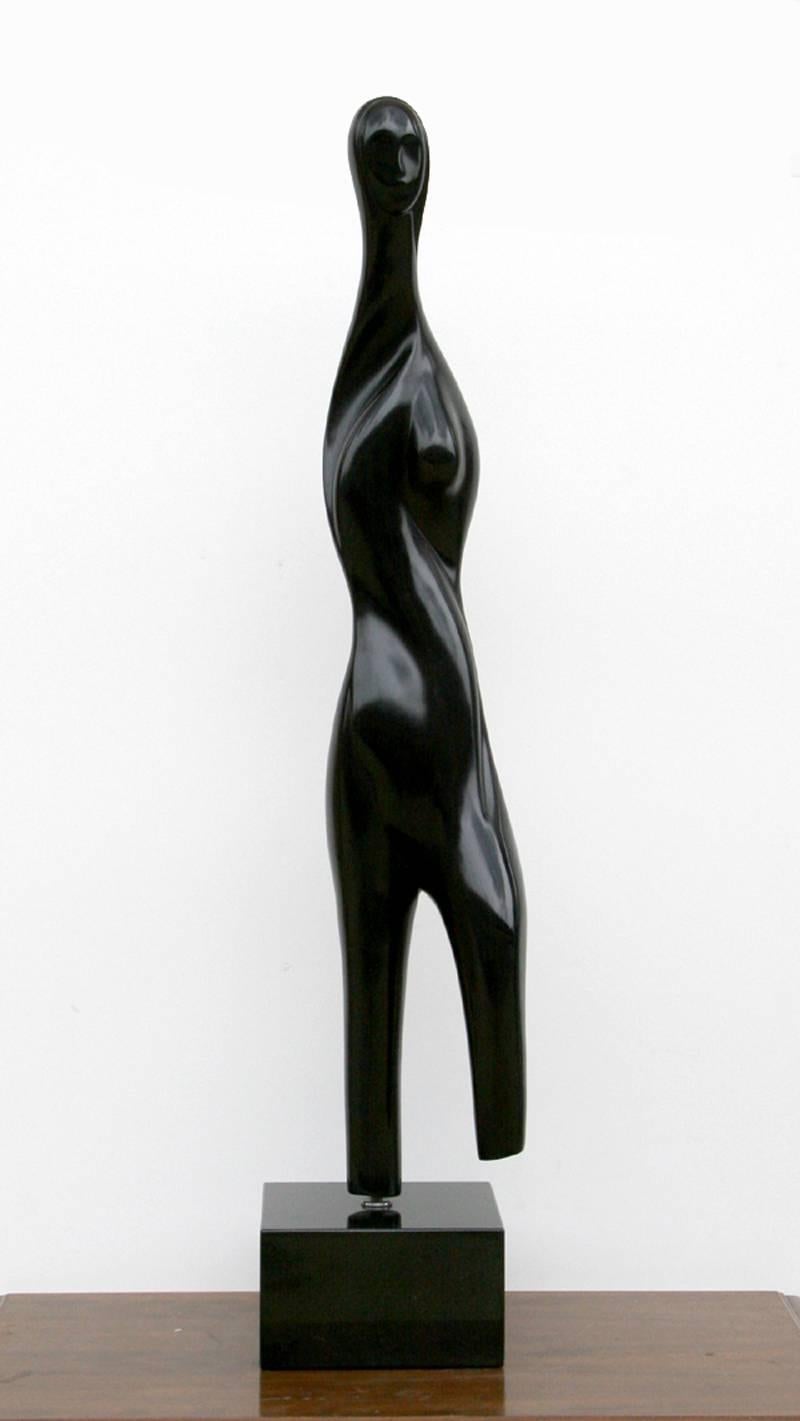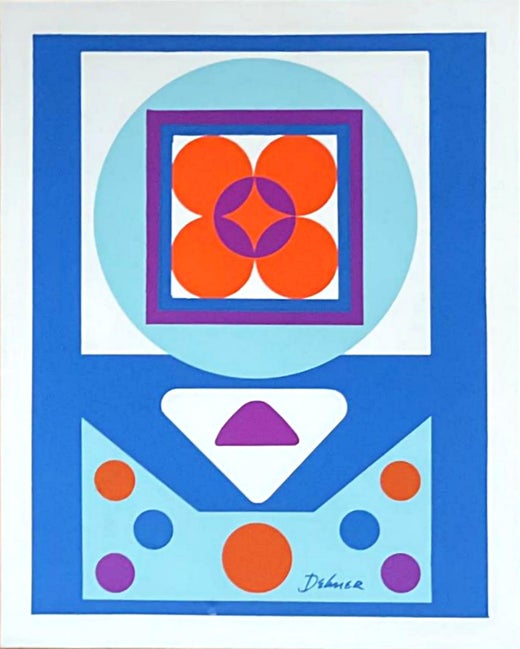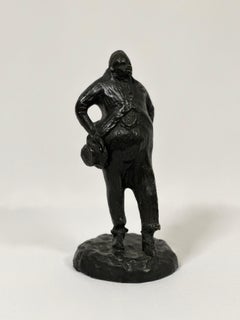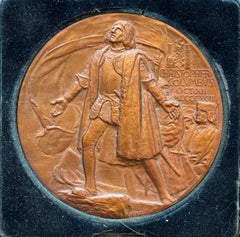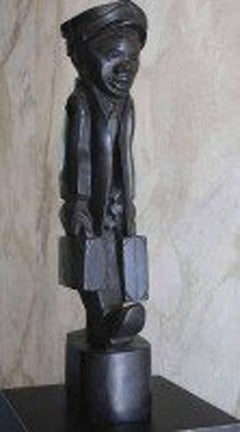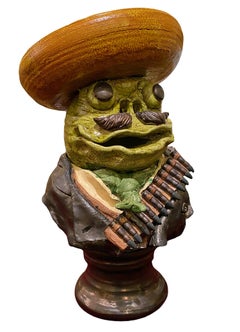
Chess Set
View Similar Items
Dorothy DehnerChess Setconceived 1957, cast in 1993-4
conceived 1957, cast in 1993-4
About the Item
- Creator:Dorothy Dehner (1901-1994, American)
- Creation Year:conceived 1957, cast in 1993-4
- Dimensions:Height: 4 in (10.16 cm)
- Movement & Style:
- Period:
- Condition:
- Gallery Location:Concord, MA
- Reference Number:1stDibs: LU354993583
Dorothy Dehner
Dorothy Dehner was one of the important women artists in the United States in the mid-century American abstraction movement (the Museum of Modern Art in New York has more than a dozen of her works in its collection). Unfortunately, she has been overshadowed by the titanic presence of David Smith (the most important sculptor of the Abstract Expressionist period), whom she married when they were both young artists experimenting with abstraction in the 30s. Though she, too, devoted an amount of time making sculpture, she was the more talented painter of the two (they separated in the 40s, allegedly due to Smith's feelings of competition with Dehner). Her pen and ink and watercolor works are the most moving, expressive and original of her creations. When the Museum of Modern Art decided to buy one of her works for its permanent collection in 1953, it was one of these watercolors it chose. The Jewish Museum and Cleveland Museum of Art have held major retrospectives of Dehner's work. In 1993, the Metropolitan Museum of Art purchased one of Dehner's watercolors from this same period. Her work is also in the British Museum, Hirshhorn Museum, Phillips Collection (Washington D. C.), Philadelphia Museum of Art and Museum of American Art, among others.
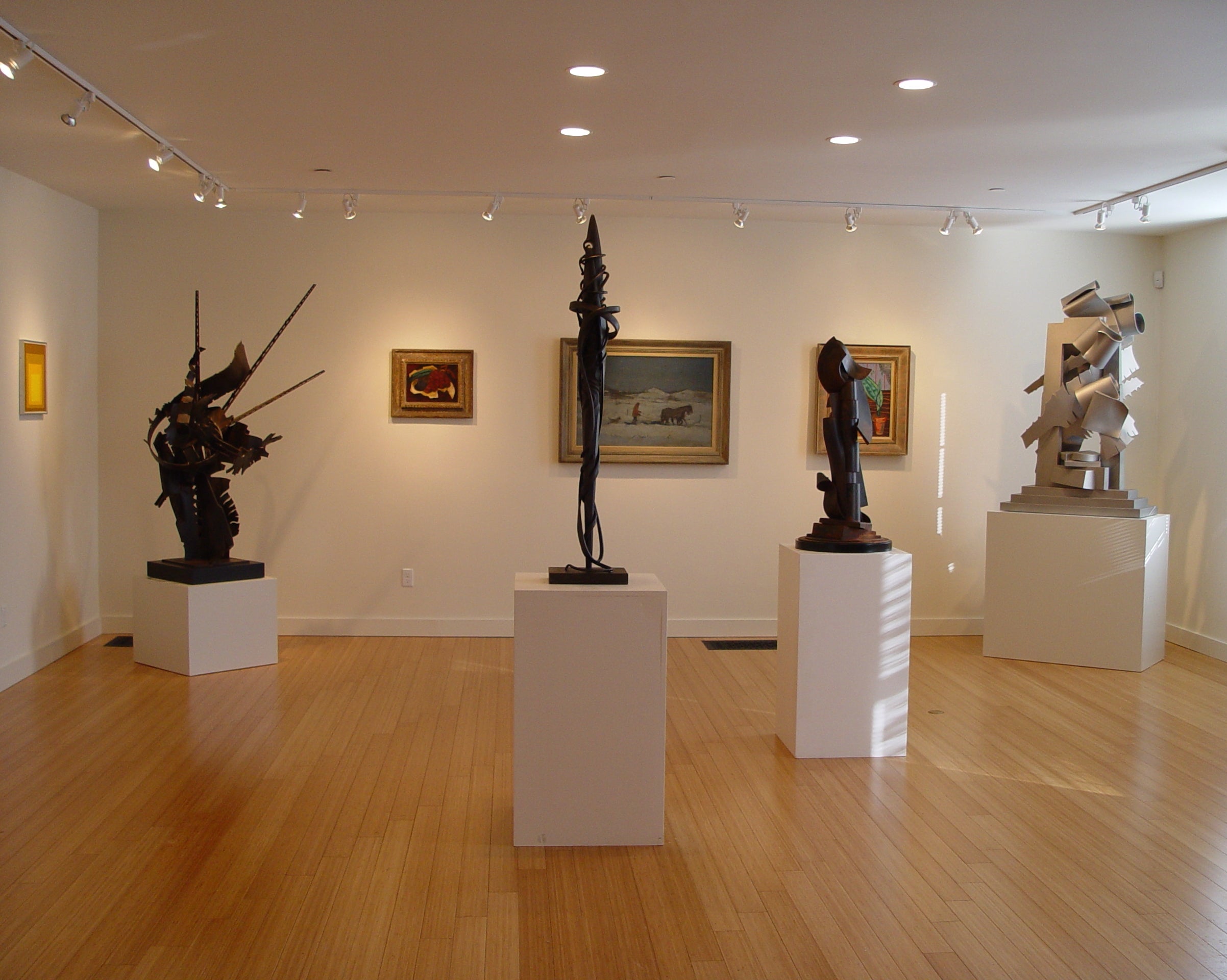
- Seated Nude WomanLocated in Concord, MALouis Bancel (1926-1978) Seated Nude Woman, n.d. Bronze 4 1/4 x 2 1/2 x 2 1/2 inches Signed: Bancel Numbered: 9/50Category
20th Century Modern Figurative Sculptures
MaterialsBronze
- The Gambler, Joe JohnsonLocated in Concord, MAETHEL MYERS (1881-1960) The Gambler, Joe Johnson, n.d. bronze with brown patina 9 inches (22.9 cm.) high Stamped with foundry mark (on the base): ROMAN BR...Category
Early 20th Century Ashcan School Figurative Sculptures
MaterialsBronze
- World's Columbian Exposition Commemorative Presentation MedalBy Augustus Saint-GaudensLocated in Concord, MASaint-Gaudens, who served as an advisor for the Chicago World’s Columbian Exposition sculptural program, accepted the commission for the official award medal. He had completed his de...Category
1890s Aesthetic Movement Figurative Sculptures
MaterialsBronze
- Guardian of the ForestBy David George MarshallLocated in Concord, MAGuardian of the Forest, n.d. Carved stone figural grouping 12 ½ x 14 x 10 inches Signed at back of standing figure: Dave MarshallCategory
1970s Folk Art Figurative Sculptures
- Bursting the BoundsBy Donald De LueLocated in Concord, MAThis De Lue design was chosen as the 111th issue of the prestigious Society of Medalists series. Both obverse and reverse bear a muscular nude constrained by the rectangular medal's ...Category
1980s American Modern Nude Sculptures
MaterialsBronze
- To The Ultimate Do We Pursue The IdealBy Paul ManshipLocated in Concord, MAThis is an iteration of Paul Manship's medal that features the artist Barry Faulkner on the obverse, and the inscription of that version is marked "Barry Faulkner Painter MXMXV (1915...Category
1910s American Modern Nude Sculptures
MaterialsBronze
- Phi Beta Red KappaBy Burton FreundLocated in West Hollywood, CAAmerican artist Burton Freund worked in Chicago in the 1930's and 1940’s for the FAP (Federal Arts Project) as an illustrator and sculptor. These original wood sculptures are time capsules of the 1930's and 1940's, hand carved out of solid wood including their bases. Walking the train platform in Chicago in 1938, the artist saw a "Red Cap" porter with a Phi Beta Kappa key hanging around his neck. When asked, the porter...Category
1930s American Modern Figurative Sculptures
MaterialsWood
- Emiliano Zapata / Frog RevolutionaryBy David GilhoolyLocated in Missouri, MOEmiliano Zapata / Frog Revolutionary, 1981 By David Gilhooly (1943-2013) 20" x 11.5" Whimsical and irreverent, Mr. Gilhooly was internationally accla...Category
20th Century American Modern Figurative Sculptures
MaterialsCeramic
Price Upon Request - Buffalo, Silver Sculpture by Arnold GoldsteinLocated in Long Island City, NYSilver cast metal sculpture of an American buffalo created by American artist Arnold Goldstein. This artwork has the signature inscribed on the belly.Category
1970s American Modern Figurative Sculptures
MaterialsMetal
- Industrial Machine Age American Scene WPA Mid 20th Century 1939 SF World's FairLocated in New York, NYIndustrial Machine Age American Scene WPA Mid 20th Century 1939 SF World's Fair HAIG PATIGIAN (American/Armenian, 1876-1950) Aeronautics Pediments Two Plaster Casts, c. 1930s each 13.25 x 14.75 x 6 inches It's possible these moquettes were created for the 1939 World's Fair, the Golden Gate International Exhibition in San Francisco. Provenance: Private Collection of Lois M. Wright, Author of "A Catalogue of the Life Works of Haig Patigian, San Francisco Sculptor, 1876-1950),” 1967 Loan to Oakland Museum of California (Oakland, CA) BIO Haig Patigian is noted for his classical works, which are especially numerous in public venues in San Francisco, California. Patigian was born in Van, Armenia, which at that time was under Turkish rule. Haig was the son of Avedis and Marine Patigian, both teachers in the American Mission School there. He and his older brother showed an aptitude for art early on and were encouraged by their parents. Their father himself had taken up the new hobby of photography. The 1880s were harsh times, however, for many Armenians under an oppressive rule by the Turkish government. Many people were fleeing to the safety of the United States. Suspicious Turkish authorities accused his father of photographing city structures for the Russian government, and in 1888 he fled for his life to America. Haigs father made his way to Fresno, California, and began life anew as a ranch hand. Within two years he sent for his wife, as well as Haig, his three sisters and brother, and in 1891 the Patigians made the journey from Armenia. Haigs father, an industrious man, worked on various farms, and eventually bought his own ranch and vineyard. It was among fertile farmland of Fresno that Haig grew up. Young Haigs education consisted of teachings by his parents and by intermittent attendance in public schools. Although he had dreams of becoming an artist, he did not have the opportunity for formal study of art, and began working long days in the vineyards around Fresno. At age seventeen, Haig made a step towards his dreams and apprenticed himself to learn the trade of sign painting. In his spare time he nurtured his interest in art by painting nature and life scenes with watercolors and oil paints. When his sign-painting mentor left Fresno, Haig opened his own shop and made a name for himself in the town. San Francisco, in the meantime, had been attracting artists since the Gold Rush and had become a thriving art center. Within a few years, Haig had put aside several hundred dollars to move to San Francisco, joining his brother who was already working there as an illustrator. In 1899, when he was twenty-three, Haig had saved enough money to enroll at the Mark Hopkins Art Institute in San Francisco. Like many aspiring artists of his time, Patigian supported himself by working as a staff artist in the art department of a local newspaper, and in the winter of 1900, nearing his 24th birthday, Haig began work for the San Francisco Bulletin, producing cartoons, black and white illustrations, as well as watercolors. In 1902 tragedy struck Haig and his family. His 29-year-old brother died of pneumonia, and then his frail mother died a short time later. Five months more saw his youngest sister, just out of high school, die too. Saddened and depressed, Haig moved out of the studio he had shared with his brother, and into a dilapidated studio in a poor section of town. During this time of sadness, Haig fed a growing interest in sculpture. In 1904 Haig created what he later called his "first finished piece in sculpture". The work, called "The Unquiet Soul", depicted a man thrown back against a rock while waves lash at his feet. The body was tense and twisted, with one hand, in Haig's own words, "searchingly leaning and clutching the rock, while the other masks his troubled head". The Press Club of San Francisco, which Haig had joined in 1901, put "The Unquiet Soul" on exhibition and local headlines proclaimed "Local Newspaper Artist Embraces Sculptor's Art", and "First Work Predicts Brilliant Future". With the support of friends and community acclaim, the young illustrator left his newspaper job and became a professional sculptor. The path of his new career was not easy though. Haig had never made much money working for the newspaper and his father needed help with growing debt from funeral expenses and business problems. From time to time Haig sold some artwork, but also occasionally borrowed from friends to pay the rent. He was the classic 'starving artist'. In the spring of 1905 a white-bearded 81-year-old stranger knocked on Haig's door. It was George Zehndner, from Arcata, California. Zehndner had been born in Bavaria, Germany in 1824, the son of a farmer. In 1849 he had come to America looking for prosperity, settling in Indiana, where he worked on a farm and learned English. He found his way to the West Coast in 1852. Penniless, he worked in various jobs from San Francisco to Sacramento, then found some luck working in the gold fields of Weaverville in Trinity County, and eventually moving to a farm on 188 acres near Arcata. In his 77th year in May of 1901, Zahndner had taken a trip to San Jose, where he stood in a crowd to see a man he thought much of, President William McKinley. McKinley was popular as 'the first modern president' partially because he realized going out to meet the common person increased his support. In September of that year, however, an anarchist assassinated the president while he stood in a receiving line at the Pan-American Exhibition in Buffalo, New York. Soon after, the city of San Jose erected a statue of the slain president in St. James Park. Zehndner took a second trip to San Jose where he visited the McKinley monument. Touched, Zehndner decided that, no matter the cost, his town of Arcata too would memorialize McKinley. George Zehndner had read about Haig in a newspaper article and asked if Patigian would create a heroic statue of the late President McKinley for Arcata. When asked how much it would cost, Haig responded, despite his borderline poverty, with the fabulous sum of $15,000. Zehndner agreed. The President was to be portrayed standing, wearing an overcoat, with his feet planted squarely on the ground. In the finished statue, one hand is held out before him in a typical posture of speaking, with the other hand holding the speech as his side. The 9-foot statue...Category
1930s American Modern Figurative Sculptures
MaterialsPlaster
$6,800 Sale Price20% Off - "Female Torso"Located in Southampton, NYRosa Portugal marble torso of a woman. Unsigned. Late 20th century. In excellent condition. American School. 18.5 inches high by 10 wise by 7 inche...Category
Late 20th Century American Modern Figurative Sculptures
MaterialsMarble
$1,950 Sale Price53% Off - "Bending Figure"By Chrissy HarrisLocated in Southampton, NYMarble free form sculpture by Chrissy Harris. Composition is cipollino green marble from Greece. Signed on base of marble sculpture. American School....Category
Late 20th Century American Modern Figurative Sculptures
MaterialsMarble
$2,720 Sale Price20% Off
